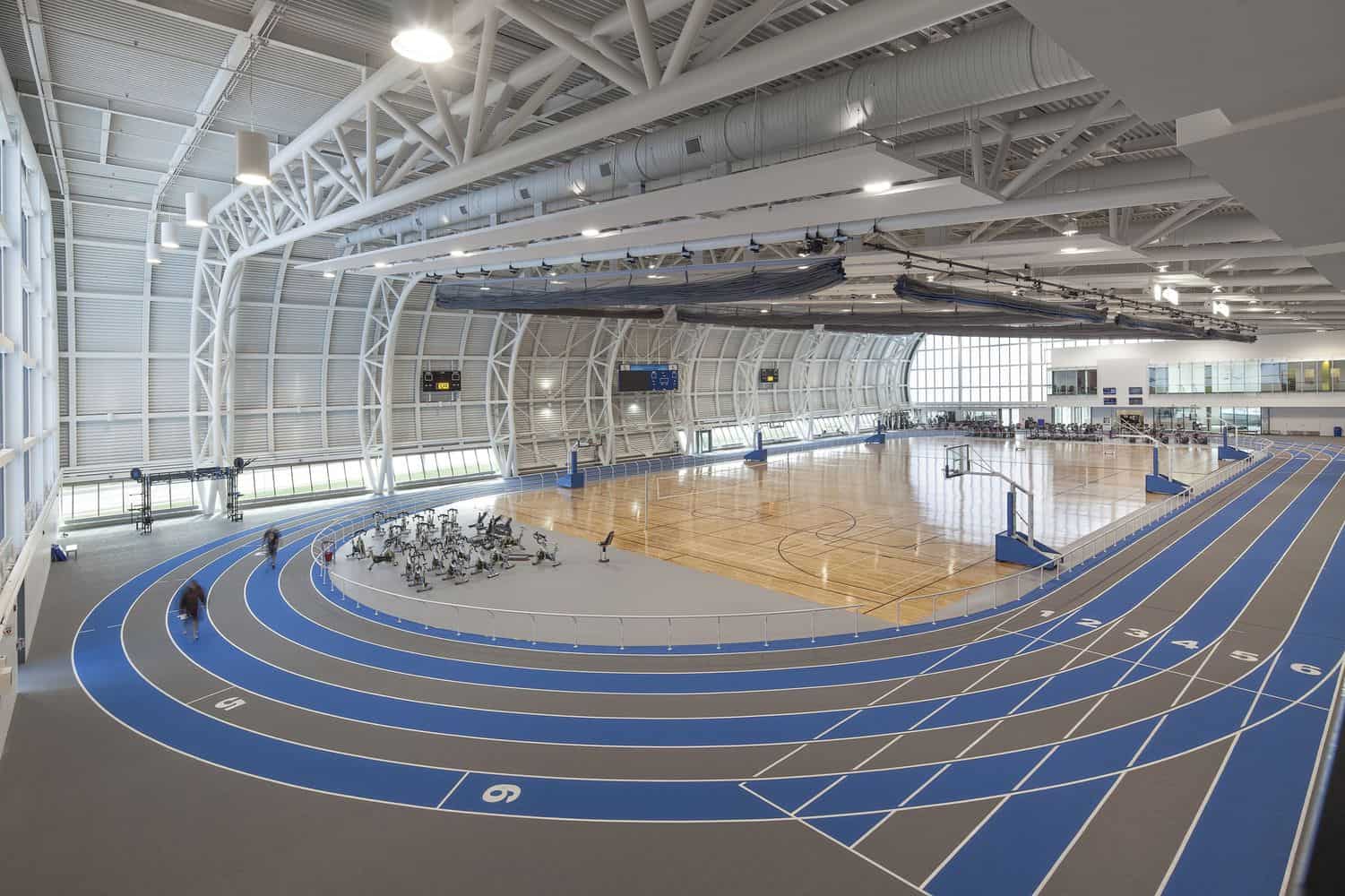Indoor sports complexes have become increasingly popular due to their ability to provide year-round practice and play spaces for various athletic programs. These facilities offer a versatile environment for a wide range of sports, such as basketball, soccer, tennis, and many others. Investing in an indoor sports complex can be a game changer for communities and sports organizations, promoting health and wellness while also creating opportunities for events and tournaments.
Save Up To 33% On Your Kit
Building an indoor sports facility has many advantages. Besides ensuring uninterrupted practice sessions and games regardless of weather conditions, these complexes can also be designed to cater to the unique needs of various sports and athletes, offering customized floor layouts, equipment, and amenities. Furthermore, indoor sports complexes provide economic benefits by attracting sports tourism, driving revenue for local businesses, and creating employment opportunities.
When planning an indoor sports complex, it is essential to consider factors such as location, size, and functionality. Taking into account the specific needs of the sports to be hosted, along with the interests of potential users and the surrounding community, will ultimately contribute to the overall success and sustainability of the project.
Design Considerations For Indoor Sports Facilities
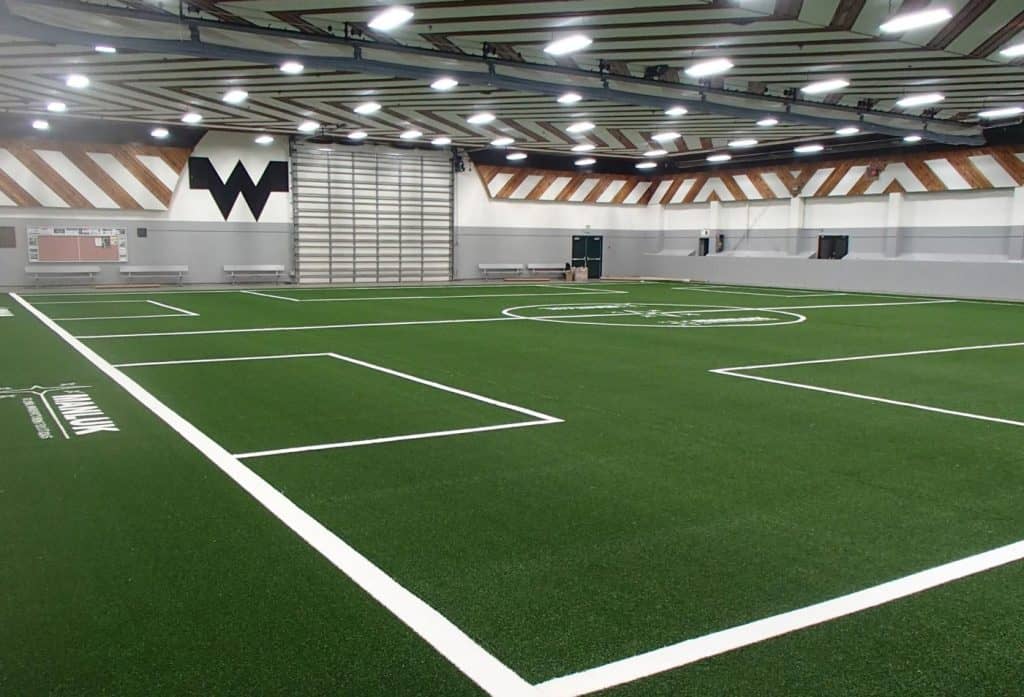
The design of an indoor sports complex is crucial to its success, as it determines the overall functionality, versatility, and effectiveness of the facility. One must consider several factors while creating an indoor sports complex design, including the types of sports to be facilitated, accessibility, space management, and cost-effectiveness.
When planning the facility’s layout, it is essential to identify the sports and programming that the complex will host. This helps determine the appropriate space allocation for different activities, ensuring smooth coordination and transition between various sports and events. Consideration should also be given to the accommodation of players, spectators, and vendors during diverse events, as this will influence the overall design and functionality of the complex.
Accessibility is another significant aspect of indoor sports complex design. Creating eye-catching and welcoming entryways and check-in areas can set the tone for the entire facility, while also supporting smooth navigation and movement throughout the complex. Incorporating features like ramps and wide doorways to accommodate users with disabilities enhances the inclusivity and approachability of the facility.
In terms of space utilization, it is important to design the complex with multipurpose areas and flexible layouts to maximize its versatility. Proper lighting, ventilation, and acoustics contribute to creating a comfortable and energetic atmosphere for sports enthusiasts. Customizable indoor sports facility solutions can help facility owners develop a design tailored to their requirements and objectives.
Additionally, cost plays a crucial role in the design process. The expenses for constructing an indoor sports complex can vary based on size, materials used, and technologies incorporated. On average, soccer fields measure 200 feet by 85 feet and cost around $50,800, while basketball courts may cost around $37,000. However, costs for smaller facilities can range from $4,550 to $20,900, depending on specifications and needs.
Keep in mind, the design of an indoor sports complex should be thoughtfully planned, taking into account various factors such as the sports and programs offered, accessibility, efficient space management, and budget considerations. By doing so, facility owners can create a dynamic, versatile, and inviting environment for athletes and visitors alike.
Key Uses For Multi-Sports Complex Facilities
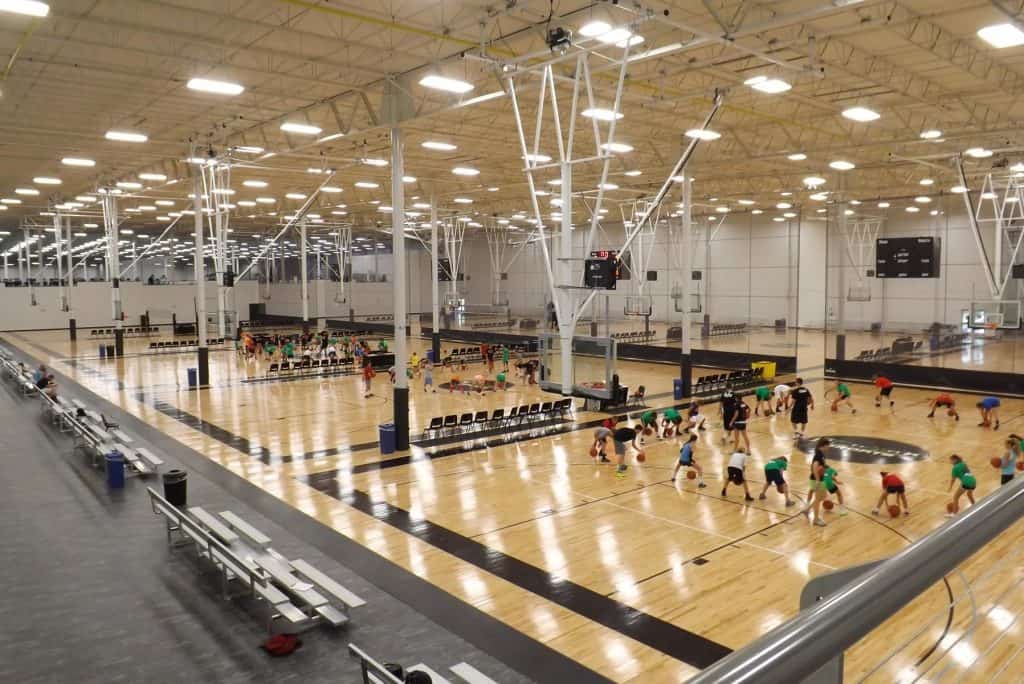
Indoor multi-sports complex facilities play a critical role in accommodating a variety of sports and recreational activities. These facilities create a controlled environment for athletes to practice and compete, catering to both amateurs and professionals.
Some of the key uses for these venues include:
Basketball and Volleyball: Incorporating hardwood basketball courts and volleyball courts allows for highly competitive and recreational games. These facilities often have retractable bleacher seating to accommodate spectators during tournaments or leagues.
Soccer and Indoor Football: The installation of turf fields within multi-sport complexes provides a suitable environment for soccer and indoor football games. These fields are designed to meet the needs of players and help enhance their performance. Indoor soccer facilities are our top seller for sport complexes. You can read our detailed analysis on building an indoor soccer structures here.
Tennis, Indoor Track, and Lacrosse: Customizable facilities may include tennis courts, indoor tracks for running or field events, and lacrosse fields. Each sport requires specific flooring material or configurations, which can be accommodated within a multi-sports complex.
Gymnastics and Dancing: Spacious areas dedicated to gymnastics and dancing allow for proper training and practice. Adequate space ensures safety and performance optimization, essential for athletes involved in these disciplines.
Boxing: Multi-sports complexes can cater to niche sports like boxing by incorporating a designated area for training and sparring. By offering such facilities, these complexes provide opportunities for athletes to improve specific skills required in their sport.
In conclusion, indoor multi-sports complex facilities offer a wide range of use for various sports and recreational activities. By customizing their design and configuration, these venues promote active participation from different athletes and cater to their specific needs.
Building Materials and Considerations
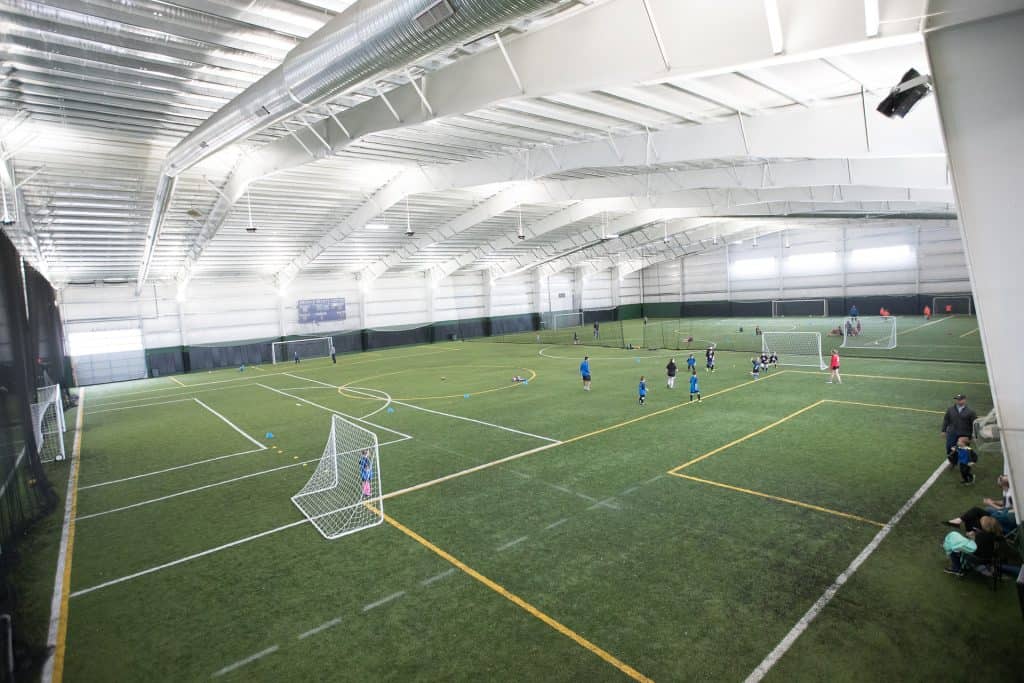
When constructing an indoor sports complex, it is essential to consider the various materials and components that go into its design. The walls, for instance, must be strong and durable, as they often come in contact with athletes and equipment. One option to consider for the walls is steel, as it offers both strength and durability. Steel is often used to construct Indoor Sports Facilities, given its versatility and resilience.
Lighting is another vital factor to take into account when designing an indoor sports complex. Proper lighting enhances visibility and ensures a safe playing environment for athletes. Options for efficient lighting systems include LED and fluorescent lights, which both offer long-lasting and energy-saving qualities.
Insulation is crucial for maintaining a comfortable temperature inside the sports complex. Adequate insulation helps regulate the indoor climate, keeping it warm during colder months and cool during warmer months. This contributes to energy efficiency and cost savings for the facility.
The roof, like the walls, must be sturdy and long-lasting. It needs to withstand harsh weather conditions and protect the interior from leaks and damage. Consider materials like metal or membrane roofing, which are both durable options providing excellent performance and longevity.
Safety is of utmost importance within an indoor sports complex. Incorporating slip-resistant flooring, padded walls, and appropriate safety equipment, like nets and padding for various sports, will help prevent accidents and injuries.
Locker rooms are essential to accommodate athletes, providing them with a space to change and store their belongings. Ensure that these rooms have proper ventilation, adequate lighting, and ample space for a comfortable experience.
Indoor pools represent another aspect of sports complexes to consider. These require specialized maintenance and design elements, such as proper filtration systems, humidity control, and water treatment solutions. Pools also necessitate lifeguard stations and safety equipment to ensure swimmers’ well-being.
Sports complexes typically feature turf and weight rooms. Selecting high-quality, durable turf is essential for longevity and athlete safety. Additionally, weight rooms need proper equipment, flooring, and layout to facilitate effective workouts and minimize injuries.
Lastly, proper ventilation is essential throughout the sports complex for air quality and circulation. Adequate ventilation systems improve indoor air quality, which contributes to the health and comfort of athletes, staff, and spectators.
By considering these vital aspects when designing and constructing an indoor sports complex, you help ensure a safe, functional, and efficient facility that caters to athletes’ needs and those who frequent it.
How Much Does It Cost To Build An Indoor Sports Facility?
When planning to construct an indoor sports complex, various factors can influence the overall cost. One of the primary considerations for potential investors is the cost per square foot. On average, building an indoor sports facility ranges from $150 to $250 per square foot.
However, these costs can vary depending on the type of facility being constructed.
For instance, expect to pay $400 to $600 per square foot for an indoor aquatics facility and $200 to $350 per square foot for an indoor ice facility.
The size of the sports complex is another crucial factor contributing to the overall cost.
A small to medium indoor sports facility can range in price from $4,550 to $20,900.
However, larger sports complexes with multiple facilities may require budgets exceeding $1.5 million and can go up to 4 million.
The choice of materials used during construction can also significantly impact the costs. Typically, brick and steel are the primary materials used in constructing indoor sports complexes. Brick construction can lead to higher initial and long-term expenditures.
Location plays a vital role in determining the cost of building an indoor sports complex. Real estate prices, labor costs, and local building regulations can affect the overall cost of the project. Additionally, operational costs can factor into the expenses, as utilities and facility maintenance costs may vary depending on the region.
To determine the actual cost of building an indoor sports complex, investors must consider the facility’s size and type, construction materials, location, and operational costs. By carefully analyzing these factors, investors can create a more accurate budget and make informed decisions about their indoor sports complex project.
Indoor Sport Complex Market Overview
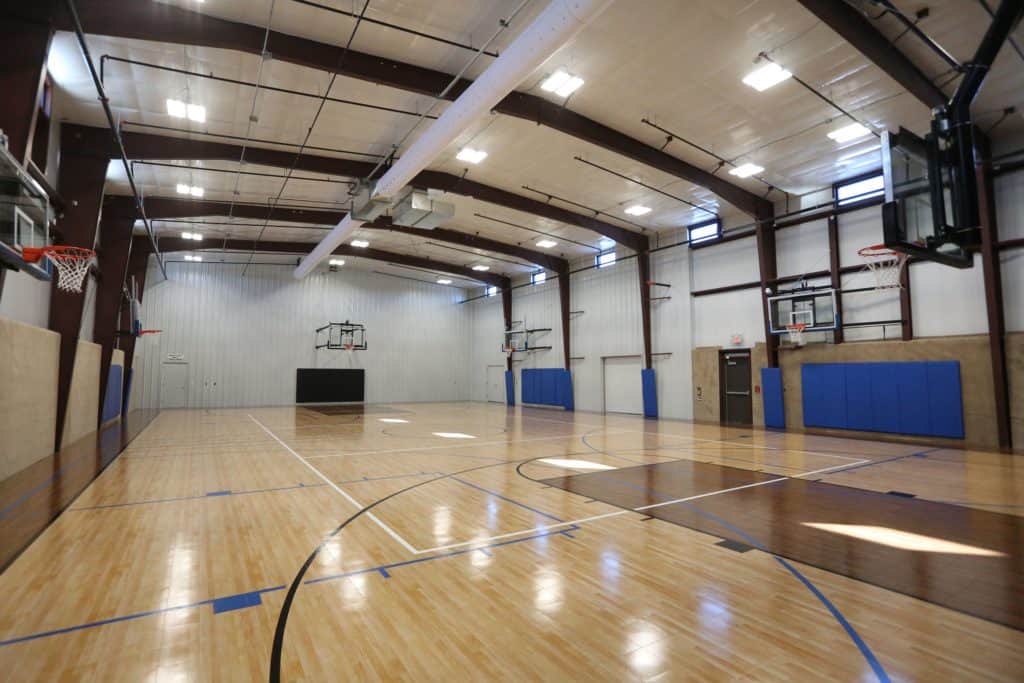
The indoor sports facilities management industry has seen significant growth in recent years. As of 2023, the market size is estimated to be around $1.4 billion, with a 3.31% increase from 2022. This upward trend is driven by various factors, such as increasing urbanization, growing demand for fitness and recreational activities, and the rising emphasis on maintaining a healthy lifestyle.
For business owners looking to enter this market, it is essential to understand the different types of indoor sports complexes and the specific facilities they offer. These can range from multi-sport arenas, which accommodate various sports such as basketball, volleyball, and soccer, to specialized facilities focusing on a single sport or activity, such as indoor climbing gyms or trampoline parks.
Investing in an indoor sports complex requires a considerable amount of market research and a well-thought-out business plan, as competition in the industry can be fierce. The Global Fitness and Recreational Sports Centers Market size was $83,680 million in 2016 and is expected to reach $113,116 million by 2023, registering a compound annual growth rate (CAGR) of 4.4% from 2017 to 2023. This indicates a promising future for the industry, with a steady market expansion.
When planning and designing an indoor sports facility, business owners must carefully consider factors such as the local demographic, community needs, and existing competition within the market. Adequate knowledge of the catchment area and its population’s interests will help determine the type of facilities and services that may attract clients and generate revenue. Furthermore, implementing effective marketing strategies and maintaining a strong online presence can significantly contribute to a facility’s success.
The indoor sports facilities management industry offers considerable growth potential for new and existing business owners. However, it is crucial to conduct thorough market research and develop a solid business plan to reap the benefits of this expanding market.

